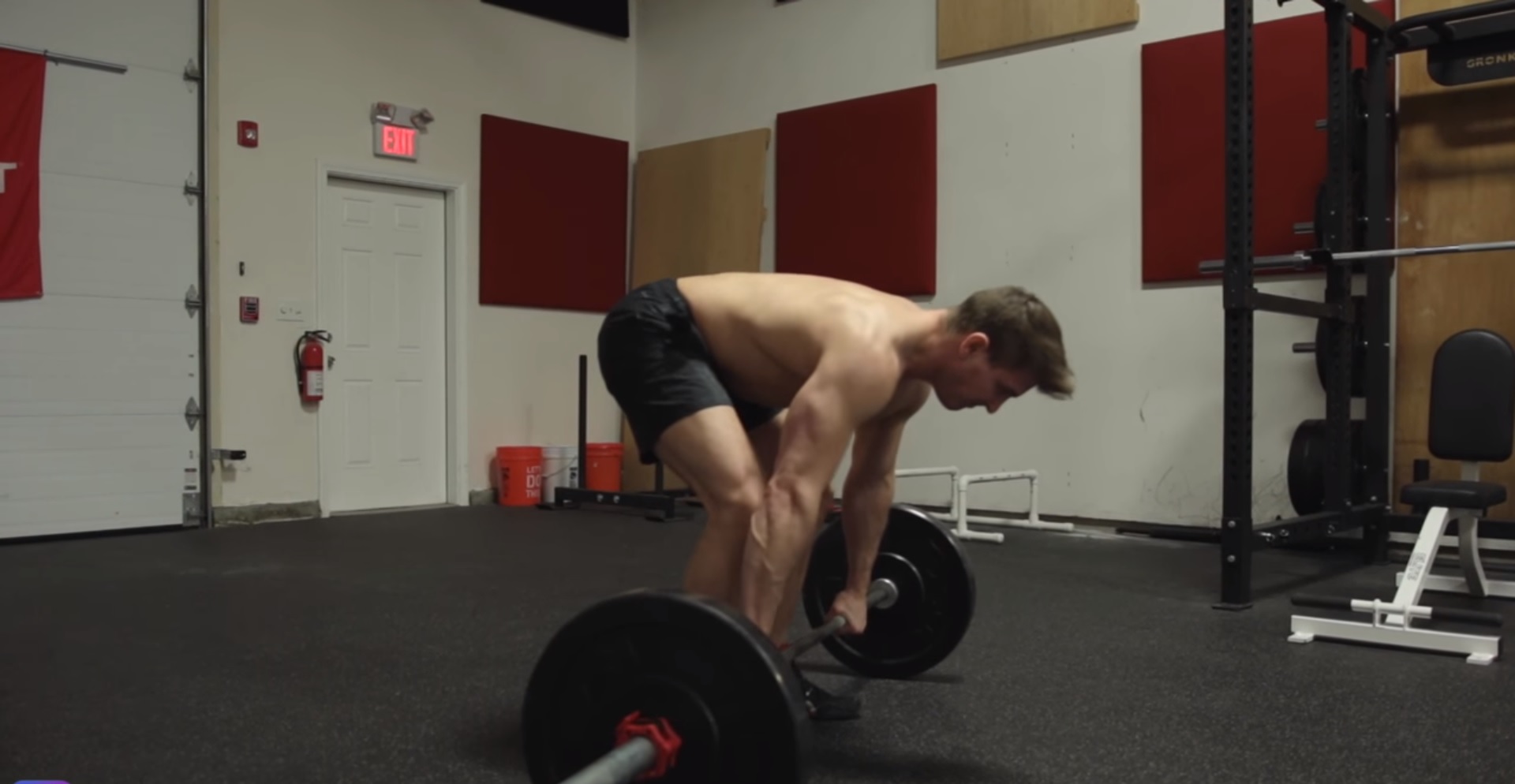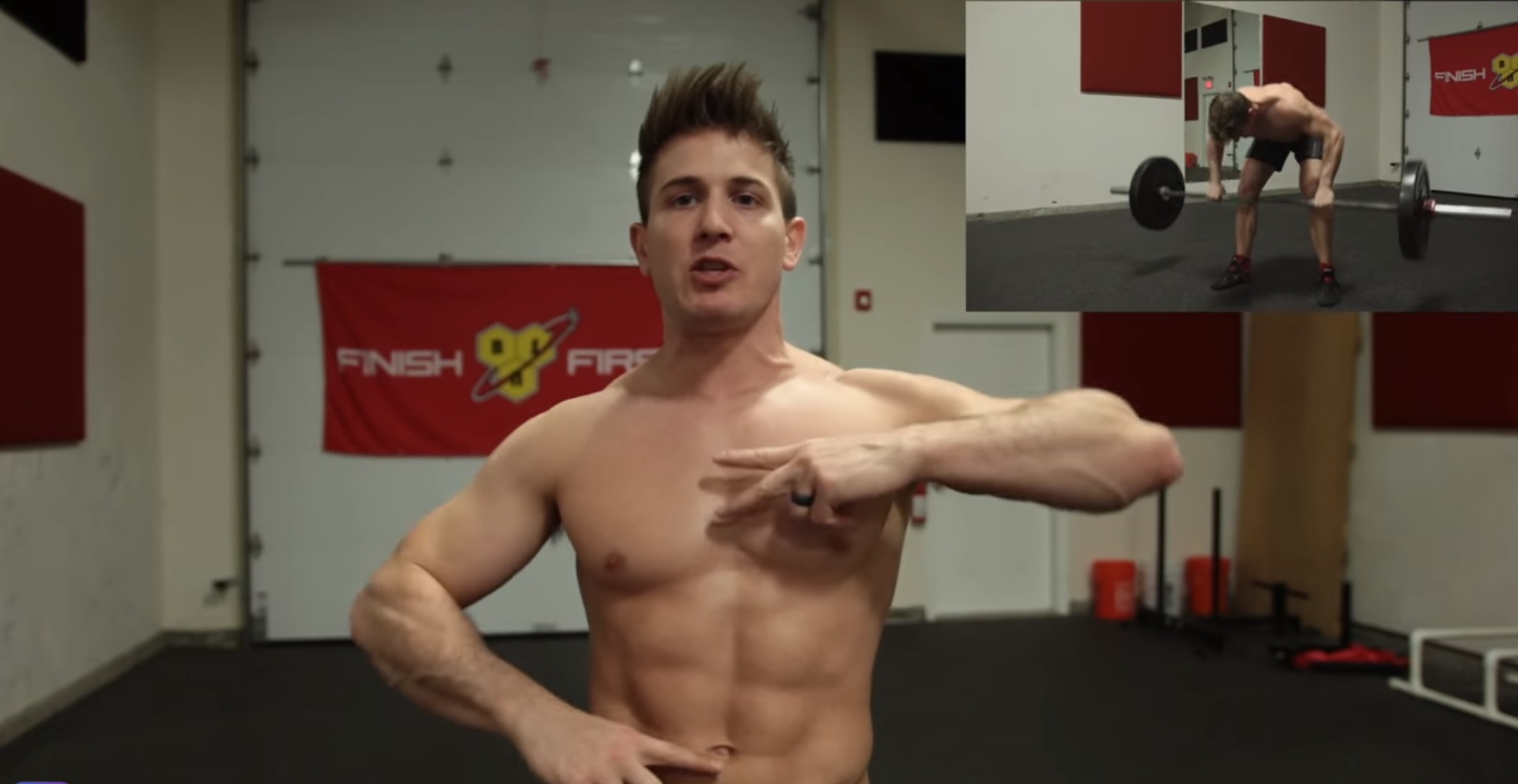1 Exercise For Wider Lats & A Bigger Back! | Pendlay Row 2.0
Turn Your Lats Into Wings!
The pendlay row is an exercise that doesn’t really get a lot of love in the gym. Mostly seasoned lifters are the only other people, besides myself, who I see utilising this exercise to its full potential during their back workout. Personally, my workouts usually start off with a heavy compound movement, such as T-Bar rows, weighted pull-ups, bent-over rows, or pendlay rows. Usually I will utilise at least two of those to start off my back workout.
Why The Pendlay Row Is So Effective
What’s so great about the pendlay row, is it’s really going to force you to recruit as much muscle fiber as possible to perform the movement, because each repetition comes from a dead stop.

Even if you’re doing a bent-over row, you can still utilise a bit of moment, or energy that you’ve built because the weight is always moving up and down until you finish all of your reps in your set. When you do a pendlay row, you pull as much weight as you can off the ground, throw the weight back down on the ground, and wait for everything to settle before you go again. It’s just like a deadlift. When you deadlift, you’re supposed to wait until the weight becomes completely dead before going into your next repetition. This is why it’s much harder to lift heavier weight when you stop after each rep instead of bouncing. Bouncing makes things much easier.
How To Perform A Pendlay Row
The way you perform a pendlay row is by bending over and keeping your upper body as parallel as possible to the ground. You’re going to grab the barbell with about a shoulder width grip, and as soon as you’re in place, with as much force, as much energy as possible, you’re going to explosively rip the barbell off the ground, and thrust it into your torso. The area between your chest and belly button is going to be your strike zone.

After you hit your torso, you’re going to fight the negative on the way down. The weight is still going to drop pretty quickly, but you want to fight it as much as you can, and focus on tensing and flexing your back while doing the movement.
One thing to keep in mind when doing a pendlay row, is that you don’t want the force to be coming from your hand. DO NOT pull with your hand. You want to get as much of your back involved as possible, and for those of you with poor mind-muscle connection, you’ll want to visualize pulling through your elbow, your back and your lats. If you wanted to, you could use some wrist straps to make sure you’re not gripping so hard that you start pulling with your hands.
How Can I Implement The Cheat & Recover Method With This Movement?
Doing this as a cheat and recover exercise, let me tell you, gets really intense, really quickly! Like I said before, proper form means being as parallel as possible to the ground with your upper body. However, when you do the cheat reps, you will start to stand up quite a bit, and that’s OK. You’re still explosively pulling the weight off the ground, and you’re still controlling the eccentric portion of the movement. Like I said, the weight is still going to fall rapidly after each rep, but you’re still controlling is as much as possible.
All that extra weight you can lift from using a bit of momentum to thrust it into the air and then control down, that’s what’s going to overload your back. That’s what’s going to help you see more strength gains and more muscle gains.
As soon as you finish 8 repetitions doing the cheat set, you’re going to take some weight off, and do 8 more repetitions for the recover. Once again, with the recover reps, you focus as much on the concentric phase as you do on the eccentric phase of the movement. This is to ensure that you’re getting enough volume in so you can see some muscle growth, and because we’ve pre exhausted the back so much on the cheat set, that concentric phase of the recover is going to be so much more effective.
If you have poor mind-muscle connection, when you drop the weight and go lighter, you’re going to really be able to feel the right muscles moving. Also, on the recover set, you’re still explosively pulling the weight off the ground, you’re just basically keeping yourself perfectly parallel to the floor, on every single repetition.
Conclusion
So if you want to incorporate this movement into your next workout, I recommend doing it as the first or second exercise of your back routine. I also recommend that you do at least 3-4 sets, and remember, 1 set counts as 8 cheat reps and 8 recover reps. Try to rest at least 60-90 seconds between sets too, so you can maximize those back gains!








